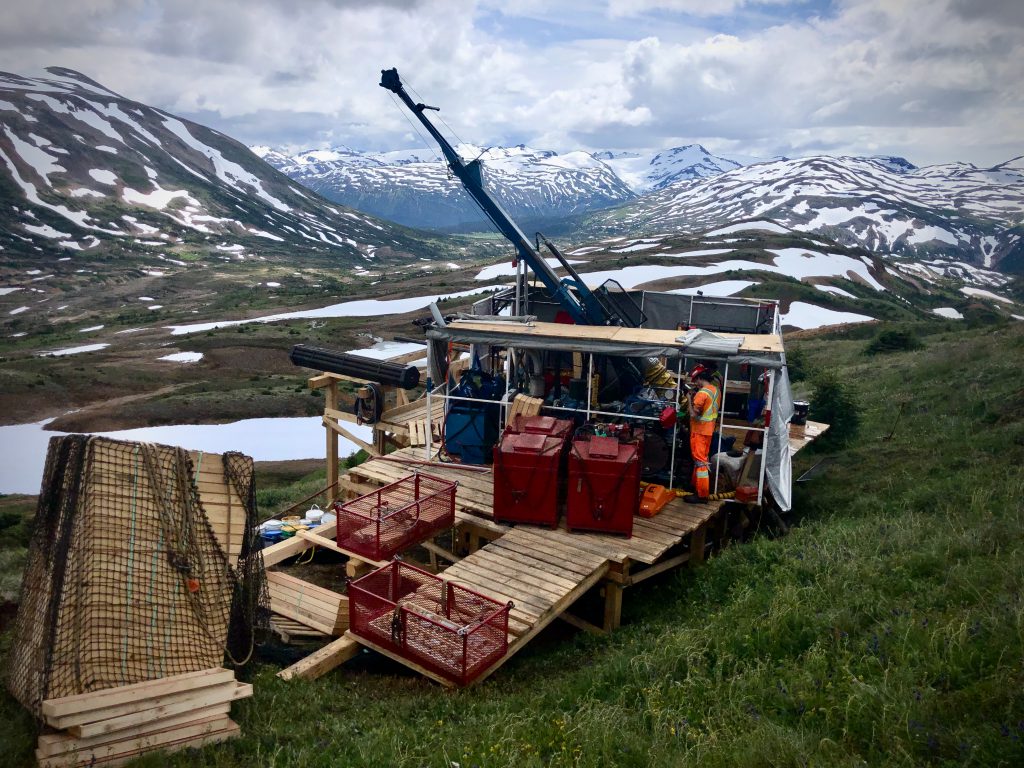P2 Gold drills 1.49 g/t gold over44.94 metres at BAM project, British Columbia

P2 Gold Inc. [PGLD-TSXV] reported results from the first drill holes (BAM-007 to BAM-015) of the 2022 drill program at its 100%-optioned BAM gold-copper project, located in the Golden Triangle in northwest British Columbia.
“The 2022 drill program is off to a great start at BAM with two drills turning and 6,100 metres completed in 45 holes,” commented Joe Ovsenek, president and chief executive officer of P2. “These initial 2022 results are highly encouraging and follow up on the four 2021 holes, which led to the discovery of the Monarch gold zone. Each new drill hole adds more to our geologic understanding as we work to expand the near-surface epithermal mineralization, and once we have the deep geophysics in hand, we will start to target and test for the source.”
Select drill results from holes BAM-007 to BAM-015 drilled at the BAM project include Hole BAM-007 that intersected 1.49 g/t gold and 2.71 g/t silver over 44.94 metres, including 12 metres grading 2.19 g/t gold and 3.92 g/t silver.
Hole BAM-008 intersected 1.13 g/t gold and 3.32 g/t silver over 33.25 metres, including 4.5 metres grading 2.56 g/t gold and 6.12 g/t silver.
These first holes were drilled along a section line running east to west to follow up on 2021 drilling and expand the understanding of the BAM geology. This drilling has defined a horst, or uplifted block, of the underlying dolostone surrounded by siltstones, mudstones and conglomerates to the east and just siltstones and mudstones to the west. Selective layers within these sediments have seen multiple episodes of brecciation, silicification and intense sericite alteration. There were also several episodes of pyrite mineralization, including a late-stage breccia fill event that appears to correlate with the higher-grade mineralization.
Drilling completed after hole BAM-015 has defined numerous structures that were active either during and/or after the mineralization event. It is anticipated that the identification of gradients within the mineralization from assay data may establish that some of these structures are part of the feeder system for the surface mineralization.
The Z-axis tipper electromagnetic (ZTEM) airborne geophysical survey crew mobilized to site at the end of June, 2022; however, the survey was delayed due to weather and equipment issues and was not completed until early August. The data generated from the ZTEM survey are being compiled and expected to be available for review prior to the end of the 2022 drill program. To supplement the ZTEM survey, a natural source magnetotelluric (NSMT) survey crew is mobilizing to site.
Results of the NSMT survey and ZTEM survey will be combined with the 2021 induced polarization survey results to produce a resistivity three-dimensional model. This, along with a three-dimensional model of the 2020 airborne magnetic data, will be used to identify the geological structures underlying the BAM project, most importantly the potential feeder zones and possible porphyry source of the near-surface, epithermal gold mineralization.
